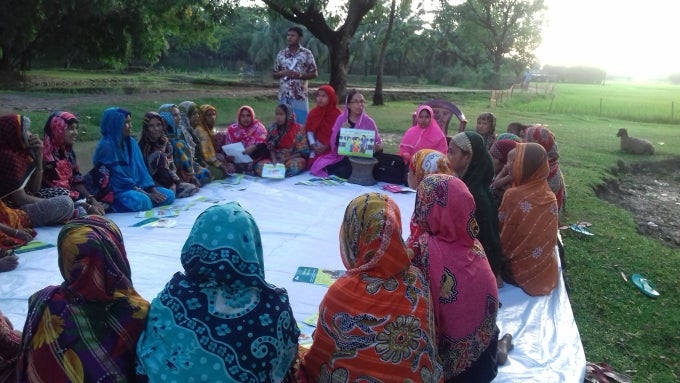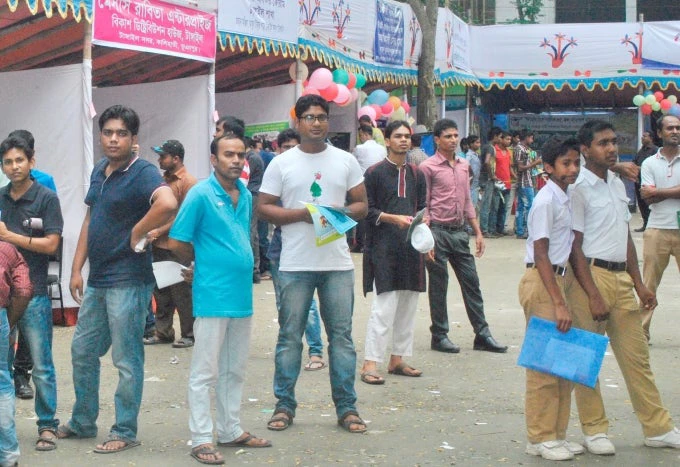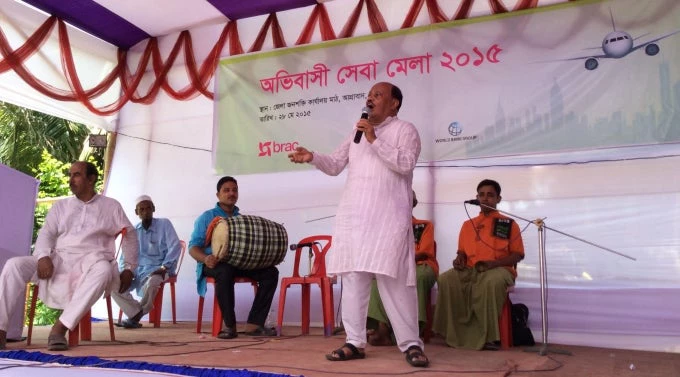
The effects of migration are not only on consumables, but also have begun to rub off on and complement social and developmental dimensions, including higher expenditure on children’s education, improved savings and investments, enhanced contribution to community development and social work amongst others.
A staggering 9.5 million Bangladeshi migrants, mostly semi-skilled workers providing manual labor, work abroad as of 2015. Remittance inflow, representing roughly a tenth of the country’s GDP, had skyrocketed to over US$15 billion by 2014, almost 20 times the inflow in 1990.
Even with the smiling faces of many migrants and their families, stories of failed migration attempts and endless suffering and exploitation run parallel. We are quick to judge aspiring migrants for their choice of informal channels of migration as soon as we come across a heart-wrenching ordeal featured on television and newspapers. Unscrupulous middlemen are often the first to blame and can be the main cause of migrants’ distress and even fatalities especially as one-third of migration attempts fail. However, sometimes, aspiring migrants have few other options in remote villages that are underserved or out of reach by formal channels.
These are some of the findings that emerged from a baseline survey conducted as a collaborative effort of the University of California, Berkeley and BRAC’s Research and Evaluation Division, under the Safe Migration for Bangladeshi Workers (SMBW) Project, funded by the Japan Social Development Fund (JSDF), administered by the World Bank and implemented by BRAC.

in Tangail
Many of us jumped on our seats when we learned that in a sample of twenty districts in Bangladesh, more than 90 percent of international labor migration takes place through informal channels, mostly personal networks and middlemen. These channels often offer up to 18 percent higher remuneration to migrants than through other channels. Thanks to aspiring migrants who already have relatives and friends abroad and would rather avoid the hassle of going through unknown middlemen or agencies, personal networks seem to have transformed into quasi middlemen, without the tag, but involving similar risks.
The middleman is the next preferred option because so far, it has proved to be the most expedient means to migrate. Aspiring migrants with relatively lower education and poor awareness of basic rights and the risks of informal channels continue to serve a thriving market for middlemen. Poverty adds pressure through a strong urge to change lives overnight. This often blurs every other consideration.
Poor, mostly young aspiring migrants generally aged below 30 years, hardly have the luxury to look beyond the possibility of an overseas job that at least pays twice as much as their existing earnings in the country. Only 17 percent of migrants surveyed actually had a work contract. Even fewer were aware that they legally needed one! The baseline survey found educated migrants to be relatively more aware of the legal documents and prerequisites of travel, more likely to migrate through recruitment agencies and to appreciate the need for training for better paid jobs.
Middlemen will not disappear overnight. Moreover, following the baseline findings we have begun to wonder whether we can afford to let them disappear till a feasible, accessible and affordable alternative is in place. Till formal channels of safe migration become more accessible to the remote aspiring migrant, informal channels like middlemen and personal networks may continue to be the obvious ‘missing links’. Meanwhile, empowering aspiring migrants with full and reliable information and services to enable informed decision making is perhaps the best way to reduce migrants’ vulnerability to exploitation in Bangladesh.



Join the Conversation